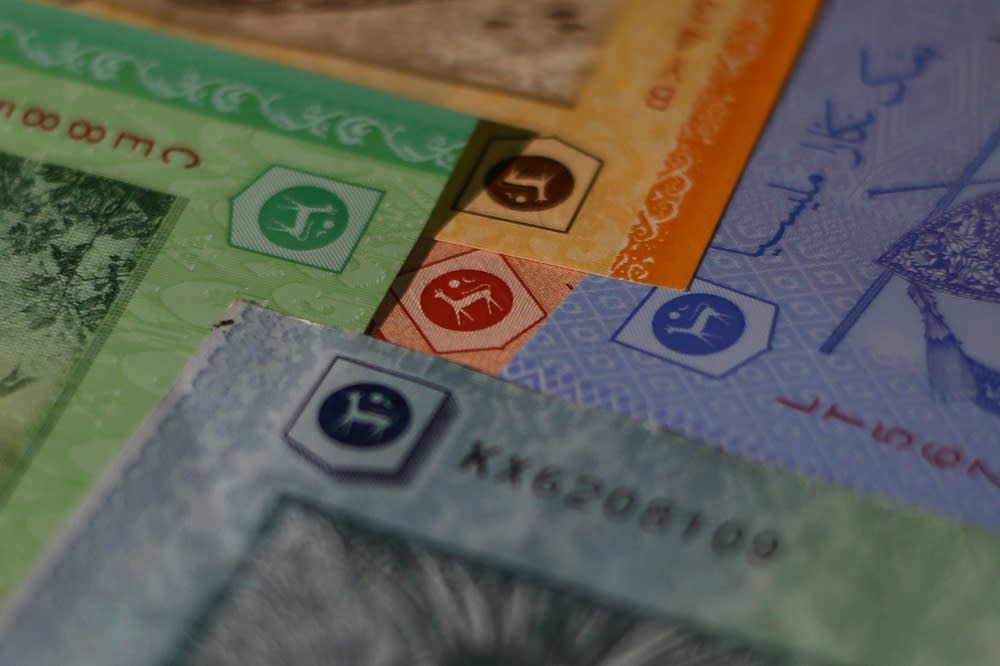Bank Negara says it produced nearly one billion coins in 2019, rate of counterfeit ringgit low

KUALA LUMPUR, April 3 — Bank Negara Malaysia (BNM) today said it minted nearly one billion coins in 2019, also sharing that its awareness programmes and joint enforcement efforts with the authorities have resulted in counterfeit ringgit being kept at a low rate.
As the sole issuer of ringgit banknotes and coins, BNM said its mandate is to ensure sufficient supply of physical currency in banknotes and coins at all times to meet public demand, while also maintaining the quality and integrity of the currency in circulation (CIC) by removing defective banknotes and also cracking down on counterfeit attempts.
In its Annual Report 2019 released today, BNM said physical currency continues to be widely used in Malaysia with approximately RM114.1 billion worth of banknotes and coins in circulation at the end of 2019, but also noted a lower growth rate of physical currency in circulation (CIC) in 2019 as more and more Malaysians embrace online payments.
“In 2019, CIC grew by 3.6 per cent, markedly lower than the five year average of 7.9 per cent. However, the country’s CIC as a share of Gross Domestic Product (GDP) has been hovering between 6.5 per cent and 7 per cent in the last five years. While the country’s CIC continues to grow in tandem with the economy, there are clear signs of slower growth with greater adoption of electronic payments for economic transactions,” it said.
“In managing the Bank’s currency operations to meet the needs of the economy, we procure banknotes from international printers through competitive tender and mint coins at our Kilang Wang located in Shah Alam. In 2019, we minted nearly one billion coins. We also conduct on-site assessment on the capability and controls of qualified printers,” it said.

High quality banknotes for the RM
BNM said it maintains the high quality of physical ringgit being used by the public to ensure public confidence in the currency, including through the central bank’s efforts such as removing worn and defective banknotes from circulation and replacing them with either new or fit banknotes.
Fit banknotes are not new banknotes, but used ones that meet the acceptable quality standards for recirculation.
Every year, BNM processes about three billion banknotes, with about half of this done at its Automated Cash Centre (ACC) in Shah Alam, while the rest is processed by the central bank’s five regional offices in Johor Baru, Penang, Kuala Terengganu, Kuching and Kota Kinabalu, the report said.
The report explained that high-speed processing machines are used to check banknotes deposited at BNM for their quality level, with only high quality and genuine banknotes recirculated while those that are worn out, defective or fake are removed from circulation.
“The ACC which started operations in 2016 has reduced the time taken to process banknotes from three months to one month, enabling the Bank to more efficiently meet the demand with fit banknotes throughout the year and thus, reduce the cost of printing new banknotes,” the report said.
How BNM keeps costs low while meeting public demand for banknotes
BNM said it manages to keep its currency operations’ cost low by prioritising the distribution of “fit” banknotes, as processing used banknotes is substantially cheaper than making new banknotes besides minimising the impact on the environment.
BNM also said it used a more durable material to print banknotes that would have a longer lifespan.
“The issuance of polymer banknotes for the lower denominations of RM1 and RM5 has also reduced the need for new banknotes, especially during festive seasons. This is due to the higher durability of polymer banknotes which last four times longer than paper banknotes. They are also more resistant to dirt and moisture.
“In 2019, about 20 per cent of processed polymer and paper banknotes were found to be unfit for circulation and shredded,” it said.
Fighting counterfeit currency with knowledge and enforcement
BNM said it also acts to safeguard the ringgit’s integrity against counterfeit or fake banknotes and coins, noting that counterfeiting currency is a serious crime that undermines public confidence in the ringgit and the central bank’s role as the sole issuer of currency.
BNM said it works closely with law enforcement agencies such as the police and the Attorney General’s Chambers to investigate and charge acts of counterfeiting, besides educating the public about the security features of ringgit banknotes and coins via the BNM website and the MyRinggit mobile application.
“In 2019, we certified more than 160 trainers from various partner institutions — including government agencies, business and consumer associations, and retailers — to conduct currency awareness and education programmes which complement our own outreach efforts,” it said, also noting it the same report that BNM also educates the public and night market traders on how to authenticate genuine banknotes.
“These ongoing efforts contribute to Malaysia’s consistently low counterfeiting rate. At end-2019, Malaysia’s counterfeiting rate was at one piece per million (PPM), well below that of other global benchmarked countries,” it said of Malaysia.
In comparison, BNM showed a chart where other countries had higher banknote counterfeit rates with Australia at 11 piece per million (PPM) in 2019, while in 2018 those like Indonesia recorded 12 PPM, Canada recorded 15 PPM, Euro Zone at 25 PPM, and UK at 200 PPM.

Related Articles BNM intensifies engagement to improve operational risk measurement RHB Investment Bank forecasts zero growth for Malaysia this year BNM: Banking sector downgrade is global trend affecting many countries



